Five years and over 400,000 motorcycles on from the 2018 launch of its first twin-cylinder models made in India, Royal Enfield releases its new Super Meteor 650 spinoffs
Unveiled at last November’s EICMA Milan Show, the Super Meteor 650 is available in two versions. Named after Royal Enfield’s first 100mph model launched back in 1955, a 700cc breakthrough bike marketed as a go-anywhere mileater, the 2023 models are both powered by the same air/oil-cooled eight-valve 648cc parallel-twin engine equipping the Interceptor and Continental GT.
This now well-proven engine is carried as a fully stressed component in an all-new composite steel open-cradle duplex spine frame which was developed at the UK Technology Centre in conjunction with RE subsidiary Harris Performance, and incorporates a new cylinder head mount for additional stiffness. Showa has now replaced Gabriel as suspension supplier and, for the first time on an RE model, the Super Meteor comes with an upside-down fork – albeit a non-adjustable 43mm Big Piston item carried at a 27.6° rake with 118.50mm of trail and offering 120mm of wheel travel.
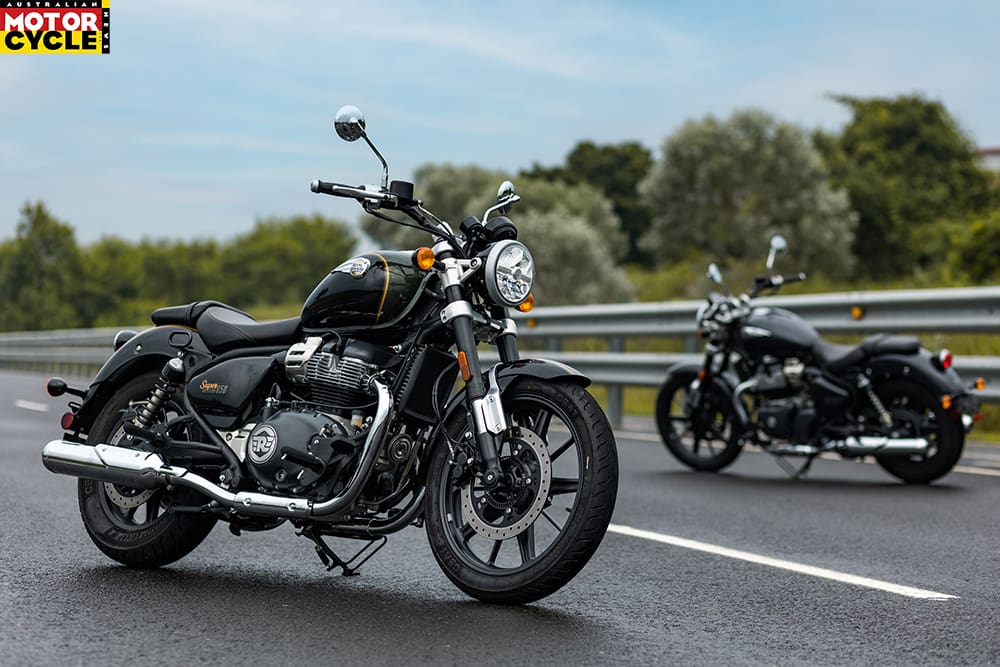
At the rear, the steel swingarm delivering a 1500mm wheelbase carries twin Showa shocks with five-step preload adjustment and 101mm of travel. There’s a 19-inch forged aluminium front wheel and 16-inch rear, shod with Indian supplier CEAT’s new Zoom Cruz tubeless tyres especially created for the Super Meteors. RE’s Chief Engineer Paolo Brovedani says his R&D test team – led by former AMCN staffer and 500GP racer Paul Young – has covered over one million kays on test tracks, cobblestones, highways, byways, towns, villages and city centres of India, the United Kingdom and Spain, in subjecting a model whose customers are likely to clock up serious mileage.

Braking is supplied on the Super Meteors by the same single 320mm front disc as on the earlier 650 models, gripped by a twin-piston caliper from ByBre. But there’s now a much larger 300mm rear brake disc (up from 240mm) that’s likely to have been partly chosen to appeal to many cruiser riders’ preference to rely on the rear stopper. Dual-channel Bosch ABS is fitted as standard.
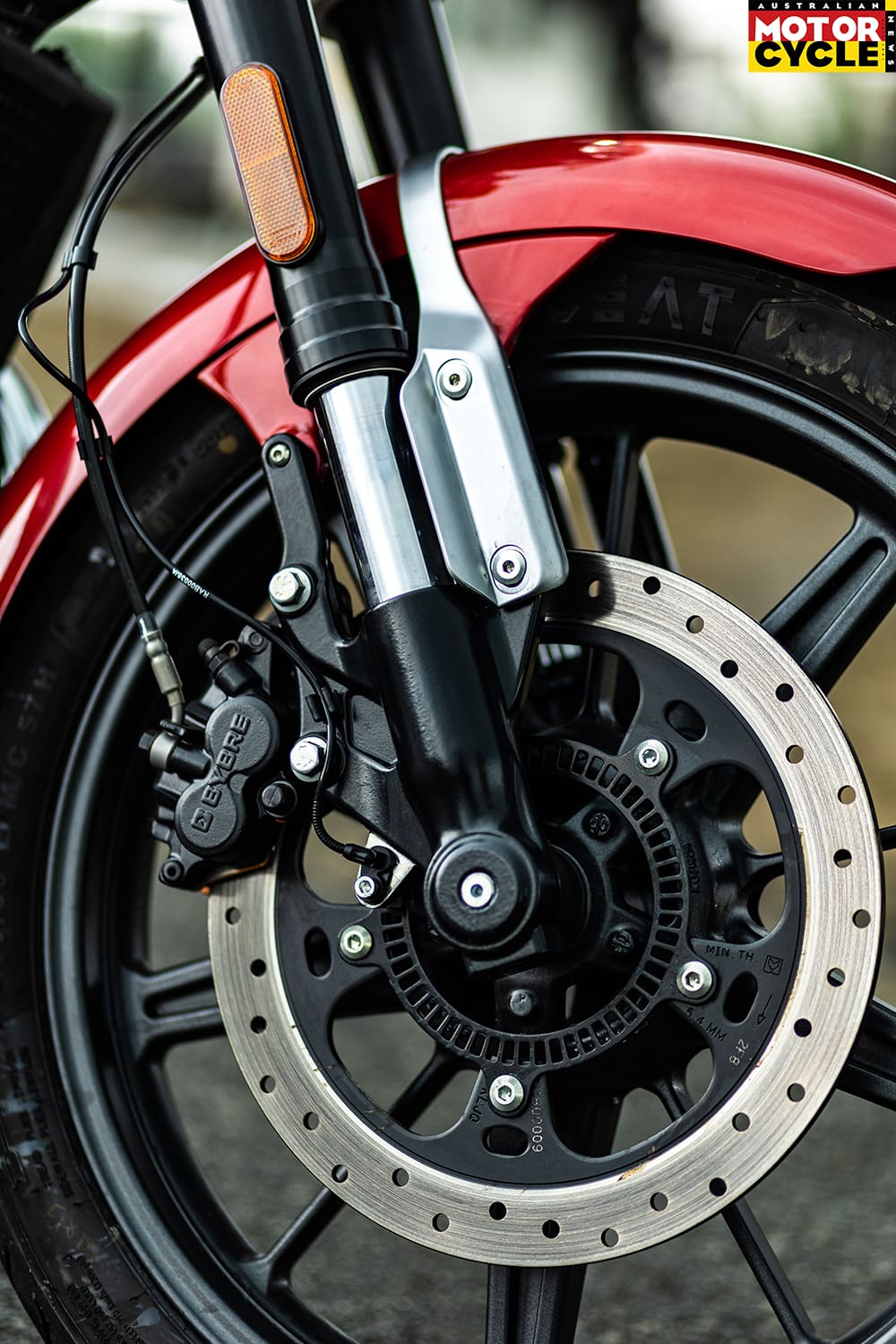
What we’ll call the standard roadster version is claimed to weigh in at 241kg with oil and a 90 percent full 15.7-litre fuel tank, equating to around 230kg with oil but no fuel. That’s quite a bit heavier than the 202kg similarly quoted for the Interceptor twin with the same engine. The Super Meteor 650 Tourer variant, which comes with a wind tunnel-developed screen, LED indicators front and rear, and a larger, better-padded seat with extra room for a passenger and the abbreviated backrest that goes with it, weighs a claimed 3kg more at 244kg.
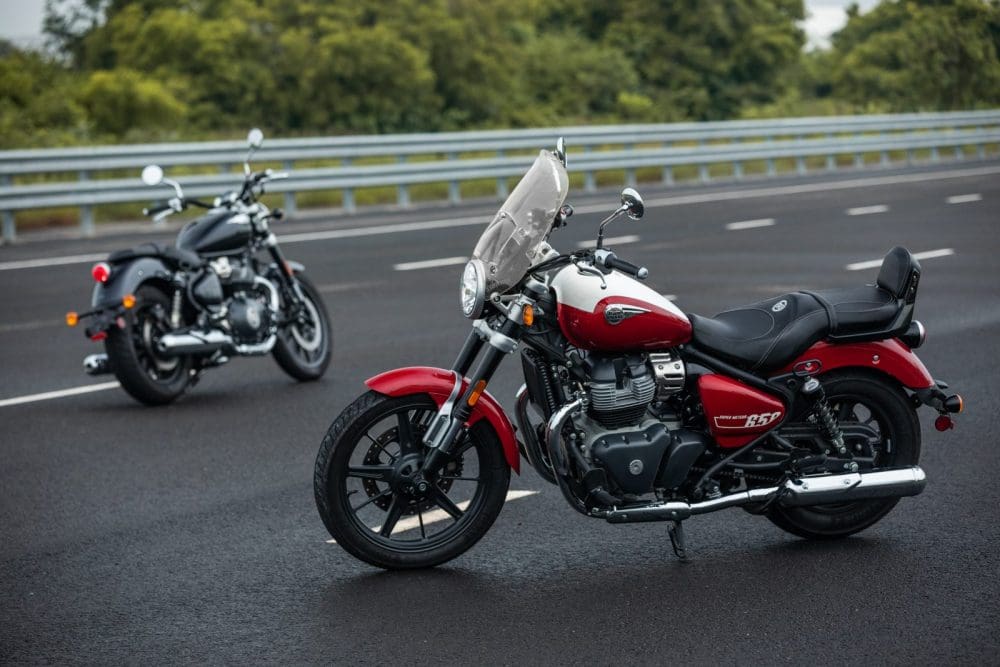
Seat heights are quoted as 740mm for the Roadster and 765mm for the Tourer variant, with forward footrests and a tall, wide touring-style handlebar featuring adjustable clutch and brake levers despite the cable operation of the oil-bath clutch. There’s a single round instrument cluster combining an analogue speedo with an inset LCD panel showing gear selected, fuel level, time, odo and twin trips, and a USB socket located beneath the left side panel. Royal Enfield’s free-to-use turn-by-turn Tripper navigation pod is included as standard for the first time on a RE twin-cylinder model. No holder for your phone – though you can buy one from the increasingly large selection of dedicated accessories.

The Super Meteor’s clay model takes shape in Royal Enfield’s UK styling studio
Both a sidestand and an easy-access centrestand come fitted as stock, the all-new satin-chrome aluminium switchblocks are stylish and practical, despite looking slightly bland owing to the absence of any electronics other than EFI and ABS on a bike with a cable throttle. The LED headlight is another first for Royal Enfield, matched to an LED rear light. And build quality is excellent with self-evident attention to detail, including the way the oil cooler and lines match up perfectly with the down tubes of the frame.
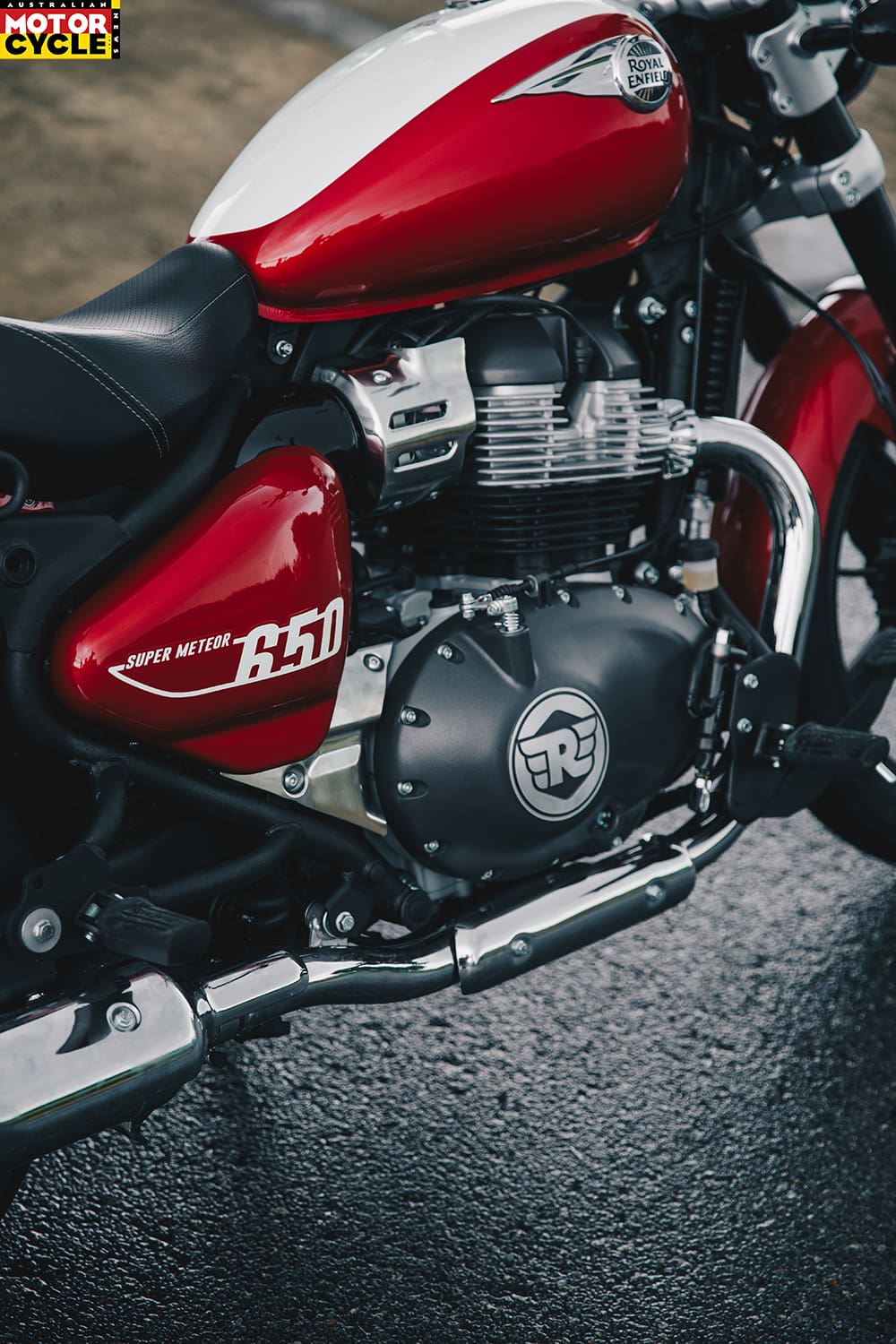
The fully spec’d nature of the bikes hasn’t bumped up their price unduly, despite these now being Royal Enfield’s flagship models. There are two groups of pricing for the roadster variant, depending on the colour. The Astral trio of Black, Green and Blue will carry a ride-away price of $11,990, with the Interstellar Grey and Green tints $200 more pricey at $12,190. Conversely, the Super Meteor 650 Tourer is available in two two-tone finishes, Celestial Red and Celestial Blue, each with a Cream tank top, costing $12,540
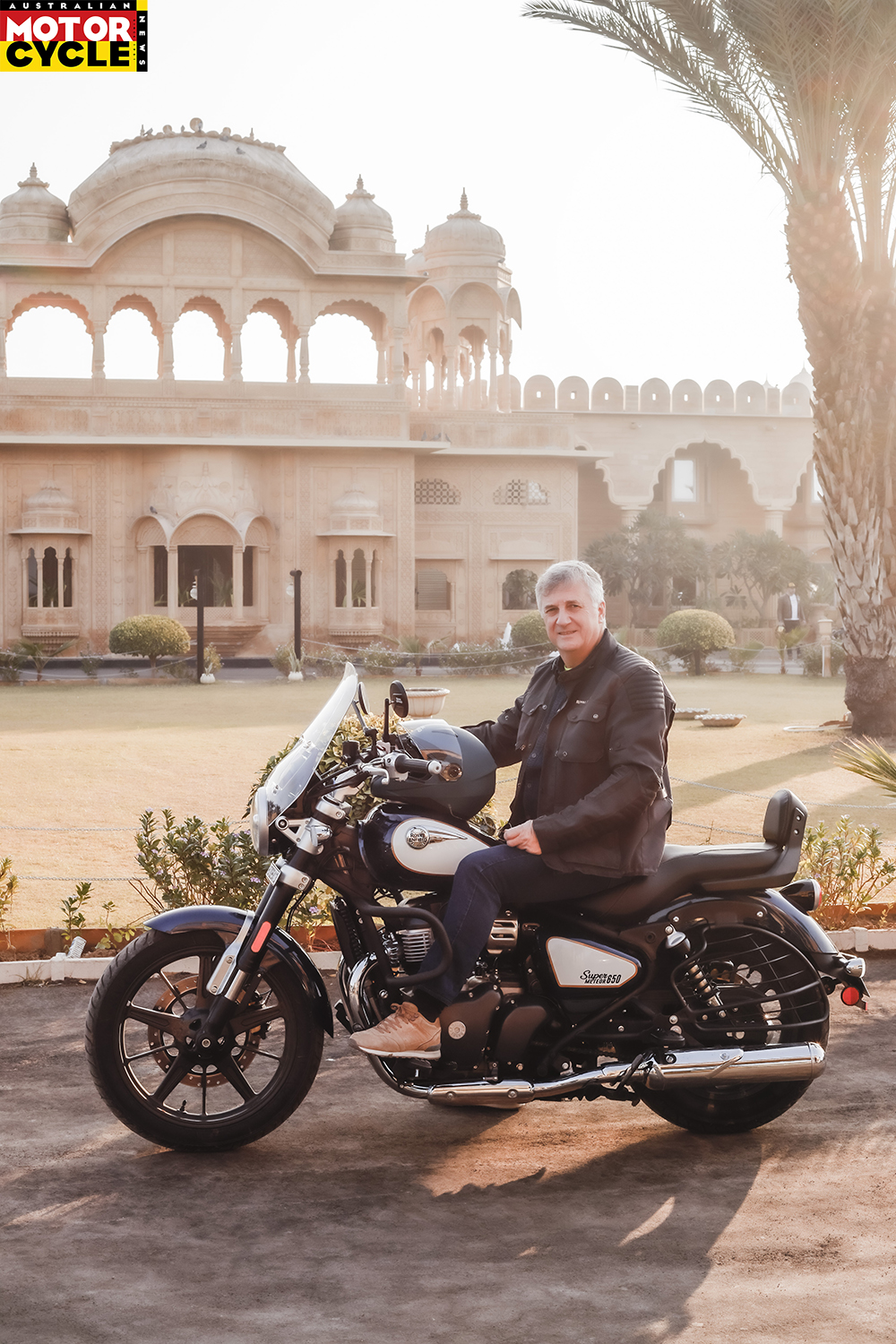
Royal Enfield’s chief engineer, Paolo Brovedani
This compares to current pricing for the Interceptor which starts at $10,990, and $11,290 for the Continental GT. Those prices indicate Royal Enfield is continuing its established tradition of offering a huge amount of motorcycle for your money.
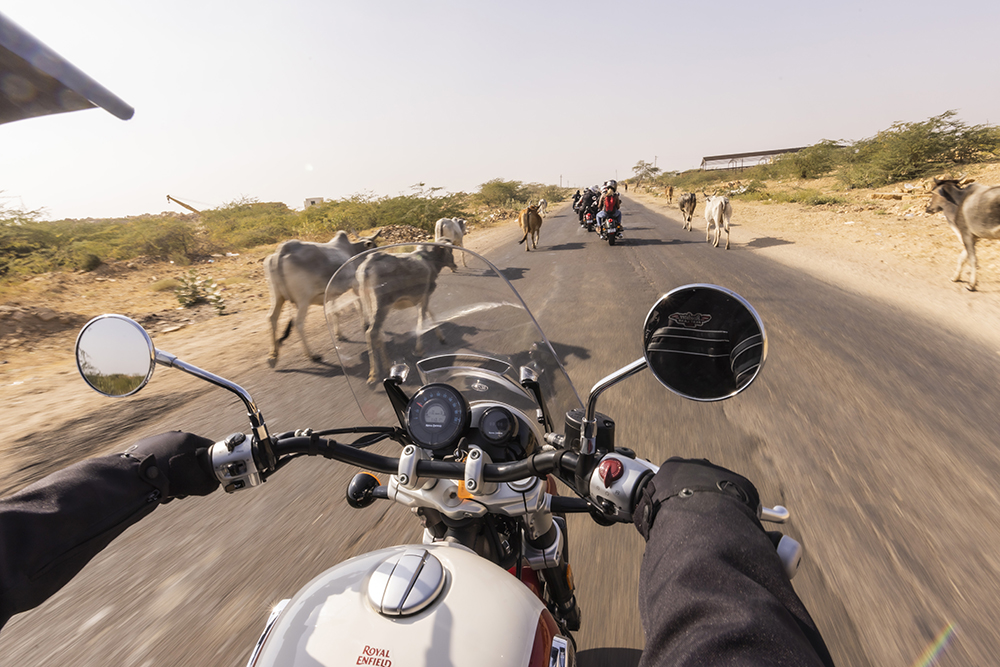
The screen on the Tourer is excellent: no turbulence or buffeting
So they look good, the pricing is great, but what are they like to ride? To discover that, I spent two days in India’s largest but most sparsely settled state of Rajasthan, riding both bikes for more than 600km over almost every single possible type of road condition. These ranged from town centres choked with people and animals, trucks and coaches in various states of decrepitude, likewise cars and vans, and motorcycles, motorcycles, motorcycles everywhere, to narrow, winding rural roads which last saw a repair crew sometime in the last century, through to deserted but beautifully made freeways in the middle of nowhere.
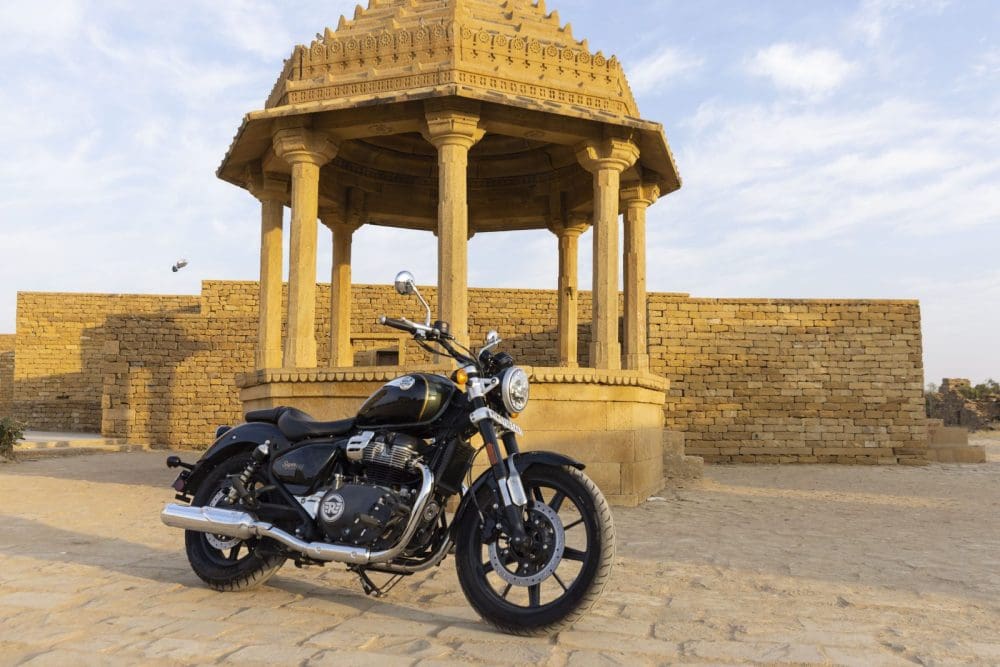
The great mile-eating capabilities of the Super Meteor were laid out in full as we hightailed it from west to east on a glorious winter morning with not a cloud in the sky. But I wished our test bikes had optional heated grips fitted – setting out at dawn at 8°C with no handguards my fingers felt frost-bitten travelling at speed before the sun got higher and the desert temperatures rose.
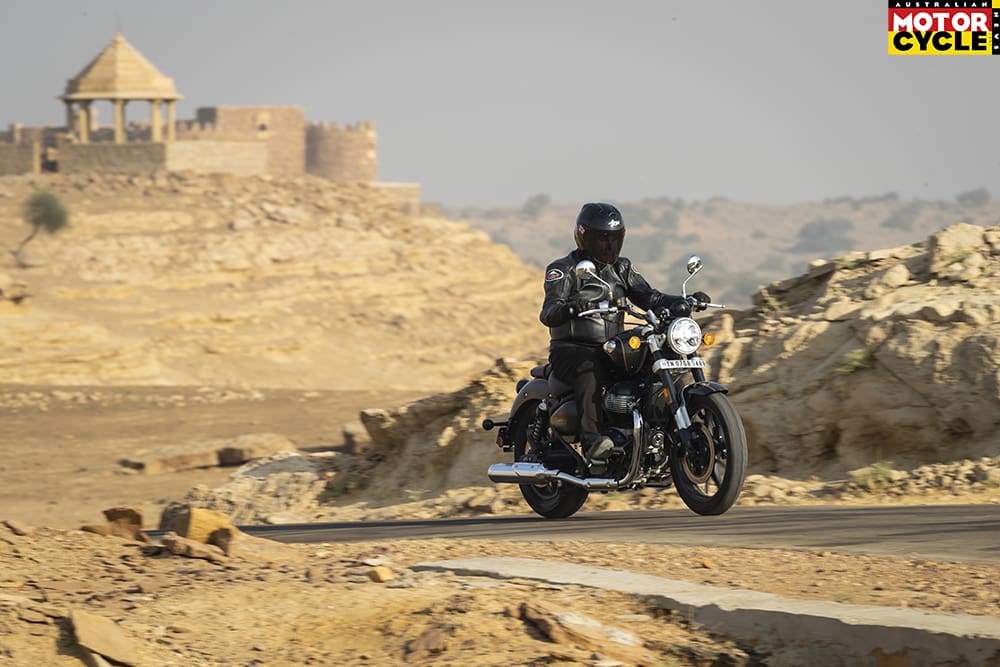
But this is a super-stable motorcycle that’ll happily cruise at high speeds on German autobahns and the like, and that’s especially true of the Tourer version fitted with the really effective screen. At 180cm tall, I found myself protected from windblast with no undue turbulence hitting my helmet or noise. That could be because the Tourer’s seat is quite different to the roadster’s, with a notably narrower stepover which allows you to tuck your knees in tighter to the tank (too bad it doesn’t have indentations, like on the other 650 twins) and a shape which has you sitting more within the bike than on its sister model. You’re also seated a little less upright than on the roadster, so leaning slightly forward as the handlebar invites you to do, sees the base of your spine no longer in contact with the softer upholstery of the seat. And Brovedani says the Tourer seat has a different density which makes it feel more luxurious.

The glorious sights and sounds of India
But I’d spent the previous day at much lower speeds aboard a roadster exploring the Rajasthan hinterland, visiting the ghost village of Kuldhara whose inhabitants deserted it overnight in 1828 in protest against the steep taxes being levied on them by the rapacious ruler of Jaisalmer. Its deserted stone-built houses are often used today as a Bollywood movie backdrop, and to get there we travelled southwest from Jaisalmer to go as close as you can get to the Pakistan border without entering the minefields lining the frontier.
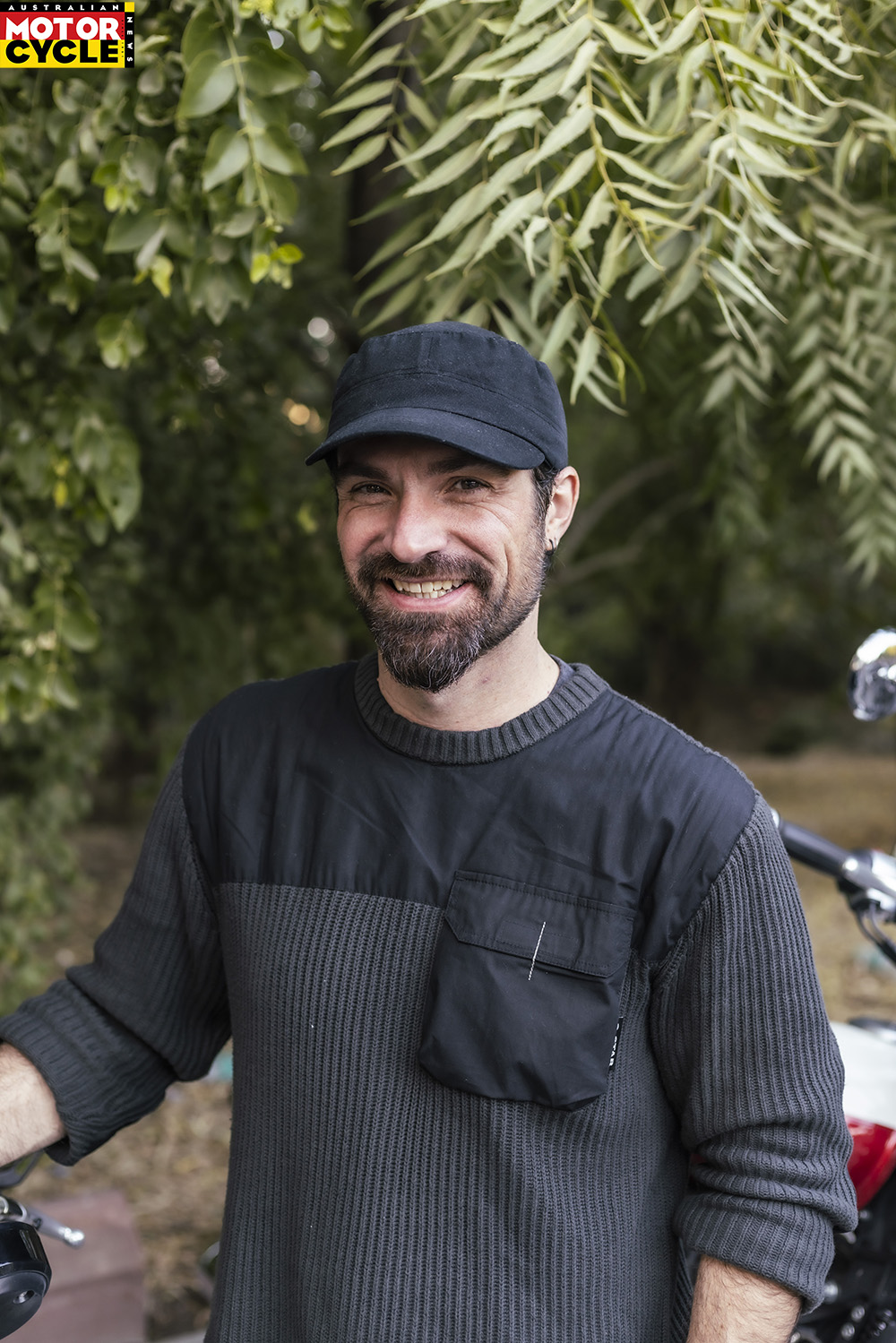
Adrian Sellers, the man behind the new Super Meteors
The often bumpy roads provided an excellent test of the Super Meteor’s Showa suspension, with the settings for the raked-out non-adjustable fork well chosen, so that even with the bike’s extra weight compared to an Interceptor or Continental GT, it didn’t bottom out under heavy braking descending into a dip in the road but kept on damping out road shock from the uneven surface.

But the rear was surprisingly even better, with the middle preload setting on the five-way adjustable Showa shocks damping out the worst of the bumps – I could honestly feel the rear wheel following the road surface as the shocks compressed and released – they’re a considerable step up from the Gabriel units, whose stiff springs made the rebound a little too quick with insufficient damping causing the bike to bounce around over bumps. That’s not the case with the Super Meteor’s compliant Showas, their well-chosen damping delivers enhanced ride quality over rippled everyday road surfaces.
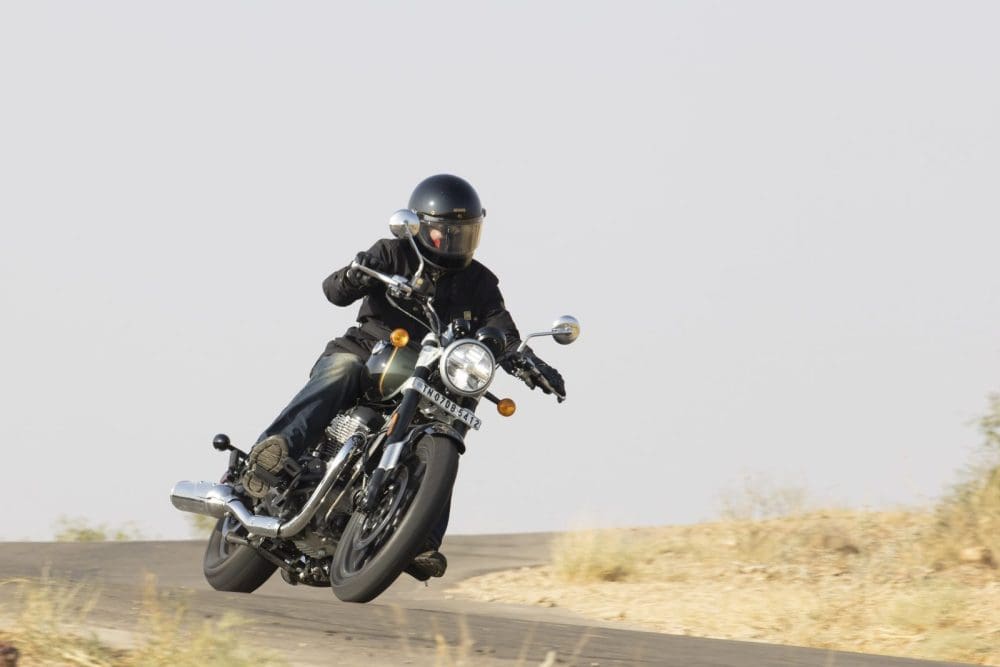
The roadster’s riding position has the pulled-back ’bar mounted on curved 80mm risers cast into the upper triple clamp combining with the mid-position forward-mounted ’pegs to deliver a reasonably relaxed yet upright stance. With the quite wide and flatter-feeling seat, it seems you’re sitting more on the roadster than in it, and there’s less pillion space. I’d have liked to try a version with the footrests moved back 100mm or so; I reckon it might be a more rational riding position worthy of the true neo-classic roadster you get the impression it’s trying to escape from – but hey, looks are important in this neck of the market, so put up with it. As it is, you must use the heel-and-toe gearshift as designed, because unless you have size 16 feet, the gap between the left footrest and the toe lever is too great – you must remove your boot from the footrest to do so. The actual shift action is flawless: just that achieving it can be a little awkward.
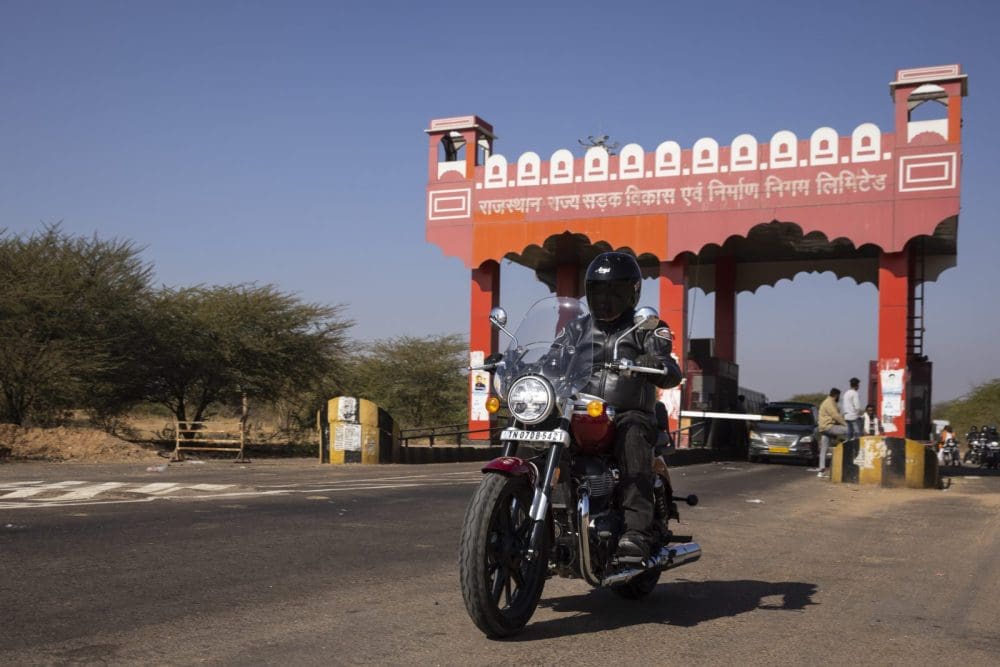
As with the existing 650 models the Super Meteor’s twin-cylinder engine is definitely the star of the show in terms of riding satisfaction. It’s been cleverly developed to be all things to all riders, so that those less experienced in riding multi-cylinder models can ride around town all day in fourth gear if they wish. But at the other end of the performance scale, it’s a willing companion for a blast through the rolling roads of Rajasthan. You never forget that it’s ‘just’ a 650 – but that’s okay, because the Royal Enfield motor invites you to work hard at making it go fast, as it will. Just make maximum use of the light action slip-assist clutch and smooth, precise gearshift to keep it revving, and you’ll be rewarded with quite impressive levels of performance.
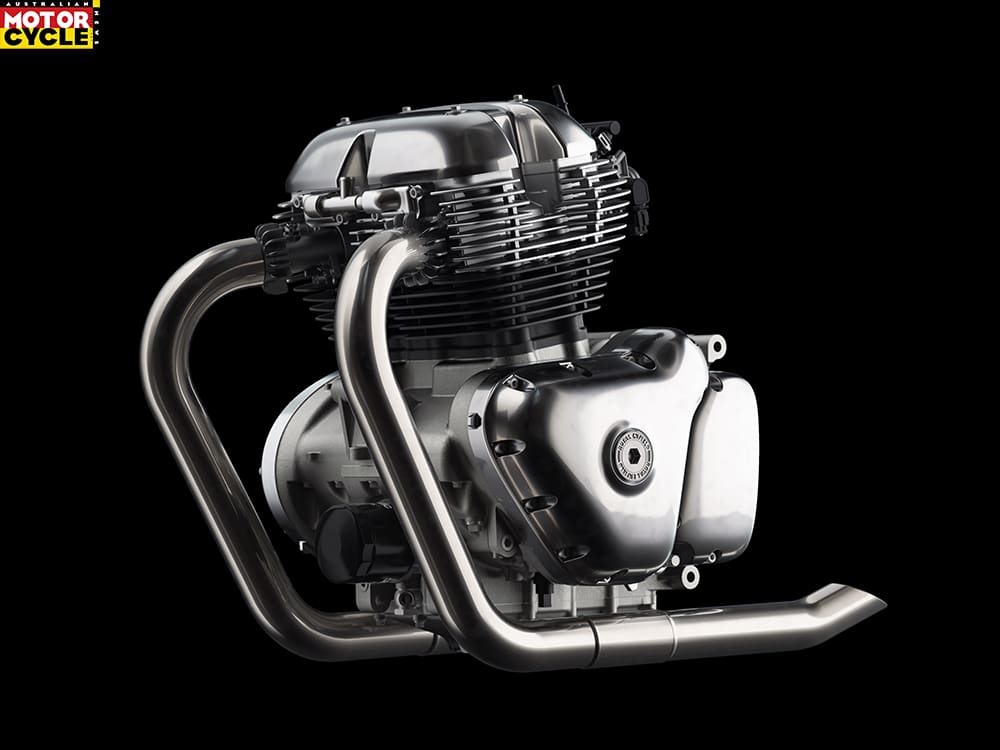
The engine’s number one asset is the flawless mapping of the Bosch ECU – it’d be well-nigh impossible to improve on the fueling, and especially the pickup from a closed throttle. That’s especially so after braking deep into a turn and then getting on the throttle again to drive out of the apex – there’s just an immediate liquid-smooth reaction to what your right hand is doing, and the response from closed to part or even full throttle is literally perfect. This again makes the bike an ideal mount for less experienced riders; you just twist and go with a flawless pickup and a totally linear build of both power and torque.
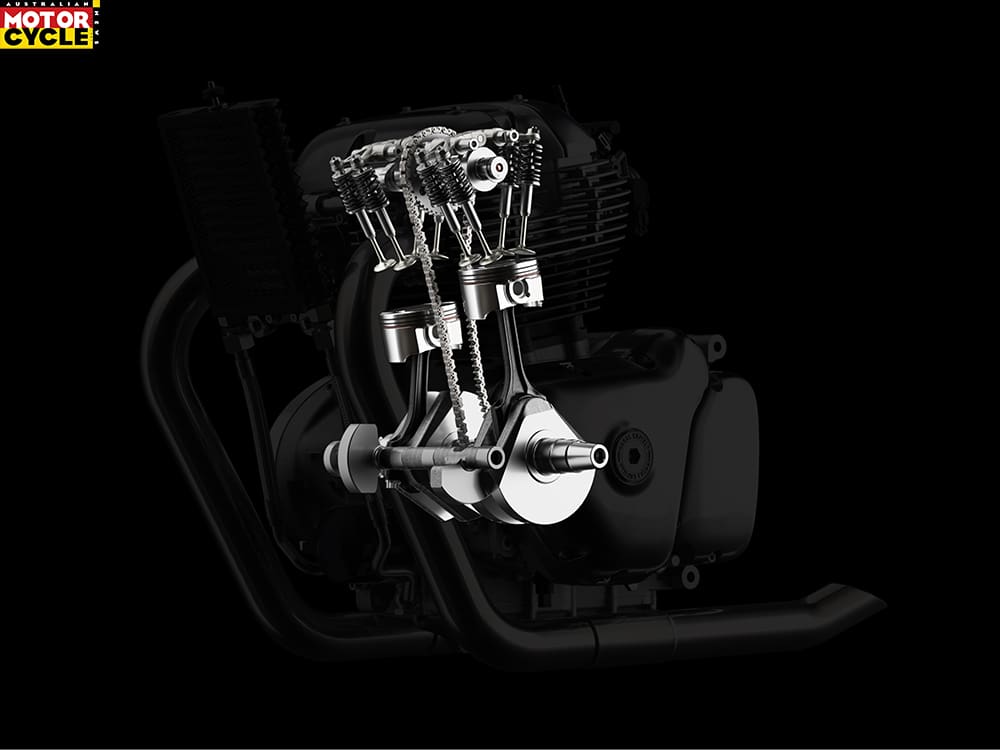
The power delivery is impressive for a mid-sized motor, coupled with the abundant torque which is ideally spread throughout the rev range, providing a predictable and controllable surge of acceleration. Top gear roll-on is impressive, too – running at three-quarter throttle at 120km/h in overdrive sixth gear still leaves sufficient unused torque for the Super Meteor to surge forward noticeably if you crack the throttle wide open. The single gear-driven counterbalancer removes every trace of vibration all the way to that hard-action 7500rpm rev limiter, and the sound from the stock exhaust is a muted semi-angry burble that’s inevitably similar to a 90º V-twin, thanks to the machine’s 270º crank.
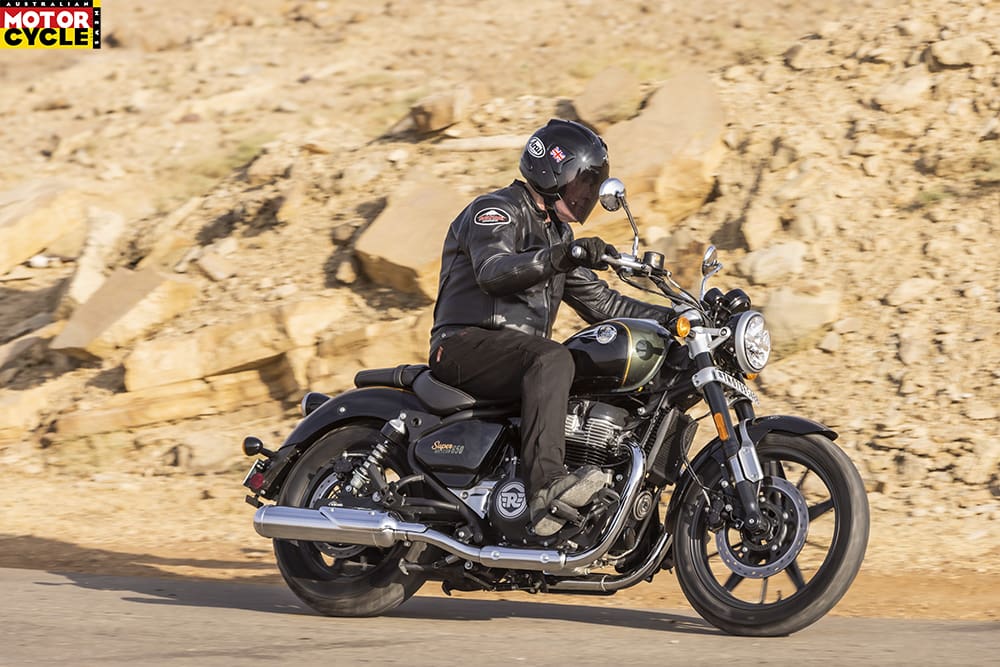
Up front the stopping power of the single caliper is okay, with good feedback through the lever that you welcome to stop the ABS kicking in, as it will do on India’s dusty road surfaces. But either Super Meteor would definitely benefit from greater bite from the front brake, making you glad you’ve got the 300mm rear disc that definitely stops the bike better than its larger front partner.

It’s possible that pad choice contributes to this feeling, but thanks to the Super Meteor’s extra weight you must definitely use both brakes hard to stop from any speed.
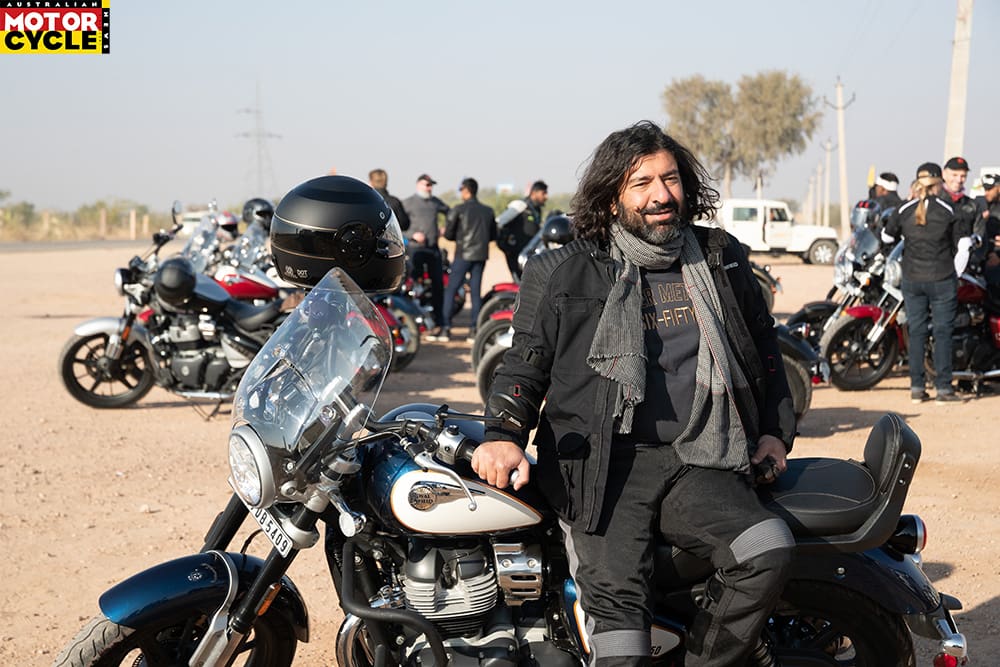
Royal Enfield CEO, Siddhartha Lal, came along for the ride
These new Royal Enfield Super Meteors are sufficiently different from each other that despite sharing the same mechanical platform, they’re essentially two distinct new models blessed with a great engine and super handling. And when the low price point is factored in, then very likely RE CEO Siddhartha Lal will have yet another hit on his hands. Since Triumph walked away from its middleweight retro twin-cylinder sector it had carved such a successful niche in, Royal Enfield has had that segment of the market all to itself. There is indeed nothing else available remotely like these new 650cc cruiser twins, and certainly nothing else giving comparable performance at such a low price – well, for the time being. As Lal said at the launch: “Each is more than the sum of its parts – they’re great fun to ride and bring a smile on your face every single time that you ride one.” After covering serious distance aboard the latest examples of this philosophy, I can’t argue with that.
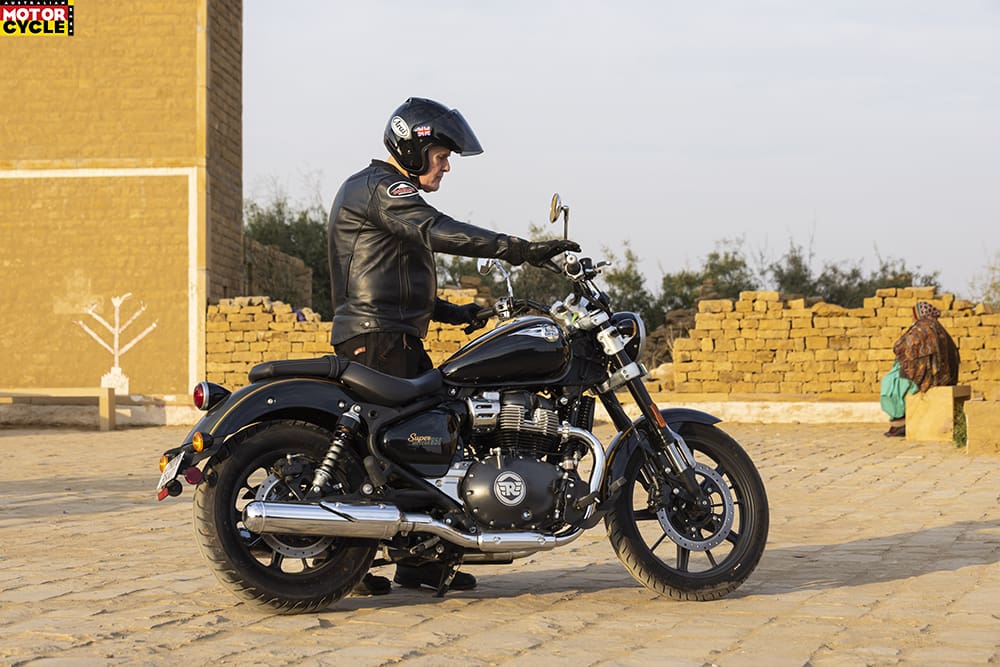
Test Alan Cathcart + Photography Jason Critchell & Chippy Wood